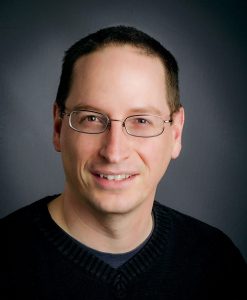By Cathy DeDe, Chronicle Managing Editor

Jeffrey Dahmer, Son of Sam, Jack the Ripper and The Zodiac Killer will be on the syllabus next fall at the SUNY Plattsburgh branch on the SUNY Adirondack campus in Queensbury.
Mark Beaulieu, SUNY Plattsburgh Associate Professor of Criminal Justice, believes he’s come up with a they’re seeing.
“When I mentioned the Serial Killer course, the students seemed more interested than in other classes,” he says.
Psychology professor Jeremy Grabbe describes it more dramatically.
“Apparently, every true crime buff in Warren County has come out of the woodwork. Everyone is…hounding us for details,” he wrote The Chronicle in pitching this story.
“It definitely piques some people’s interest,” says Dr. Beaulieu. It taps into the popularity of TV shows and podcasts like True Crime and The Murder Squad.
Dr. Beaulieu says enrollment drops in 2020 and 2021 are impacting junior and senior-level enrollments. “In the Criminal Justice program, we usually average 10 to 15 class size.” It’s dropped to below five.
The professor said the course appeals to psychology students, too, and possibly even to non-matriculating students.
He’s hoping for as many as 35 students, or more if he can move to a bigger classroom. Registration began this week for the fall semester. “The more students the better,” Dr. Beaulieu says.
“Serial Killer” wasn’t even a term before the 1970s, Dr. Beaulieu notes.
The definition: “At least three killings, not at the same time or place, at least three distinct incidents.”
That’s different than mass murderers — one incident with many victims — or spree killings, two or more victims at different locations over a short time.
The never solved Jack the Ripper slayings in England between 1888 and 1891 is a prominent case “definitely, in the history of serial killers,” says Dr. Beaulieu.
Son of Sam (David Berkowitz) in New York City in the mid-1970s and Herbert Mullin in California in the early 1970s were one type of serial killer — “the visionaries, serial killers who hear voices or feel commanded to commit murder.
“Jeffrey Dahmer obviously will get covered. The hedonistic, doing killings for pleasure (in Milwaukee between 1978 and 1991). Most of these students weren’t even around, but they know that name.
“Ed Kemper, the co-ed killer (1972-73) who killed at least 6 people and his grandparents over a one-year period,” was the subject of the Netflix series Mindhunter.
Serial murderers have varying motives, says Dr. Beaulieu. “Some go for power and control, like the BTK killer,” Dennis Rader. “It stood for Bind-Torture-Kill. Over several decades (1974-1991), he tortured and killed so many, and he took pleasure in taunting the police.
“There’s the mission-oriented, targeting certain religions, or prostitutes, homeless people, sexual orientations. Joseph Paul Franklin: He targeted Jews and African Americans (in the late 1970s-early 1980s). He was against mixing the races.
“There’s the people who are fascinated and get involved, like Michelle McNamara,” a true crime writer whose research helped catch the Golden State Killer (1974-1986).
“I’ll cover the biological and psychological theories to the causes of why someone becomes a serial killer, as well as other social sciences, the sociology of it.
“We’ll cover profiling a little bit. We’re hoping to add a forensic psychology minor at the branch. This would fit.
“We’ll look at recent developments. The Zodiac killer (1960s), he doesn’t get caught without DNA (analysis), for example.”
Dr. Beaulieu says the 2002 D.C. Beltway Sniper Attacks, by John Allen Muhammad and teenager Lee Boyd Malvo, were technically spree killings. He said they are “a good example of the failure of profiling. The killers were African American, but everyone was looking for the stereotypical middle aged white guy. They were even stopped by police and let go.”
Students in Criminal Justice
Dr. Beaulieu says, “A good percentage of the students in the Criminal Justice program are coming to be police or correctional officers. They might be looking at law school, maybe probation or parole officers. Some come because they want to work with at-risk kids, in advocacy or reentry programs (post-incarceration).”
He says the goal is “being able to apply theories of the course to real life examples, to understand why we care so much about them and how they are presented in the media.
“Most people if they go into law enforcement are not going to be dealing with this, up here where crime rates are low, but it helps to understand…what are you looking at in an investigation, what not to ignore. If you’re working with kids, and they are harming animals, maybe you want to do an intervention early on…It brings up other questions such as victimization, why some people are more at risk than others in society, the social factors, arguments of nature versus nurture.”
Dr. Beaulieu says he doesn’t follow true crime shows or podcasts himself but that his wife does. “I’d drive her crazy. I’d just be yelling at the TV, that’s not how it works!”
He says the TV series CSI, “when it first started, they say it actually lowered conviction rates. “Juries expected it to look like the show,” he says.
“They needed a cleaner answer, like they saw on TV, instead of the messier pieces of more circumstantial evidence you put together in a real investigation. There was an actual dip in convictions, and that’s what they heard in jury interviews. I do think it’s gone back up now.”
What’s the appeal of serial killers?
“They’re so out of the ordinary they become fascinating. You can’t associate with it. Jeffrey Dahmer was a cannibal. No one is thinking, that could almost be me. It’s so unique, they catch our attention, and they’re scary. You could be at risk regardless of what you do. It’s just so random, at least some of them…
“The last data I saw, serial killers are less than 1 percent of homicides. Most homicides are between people who know each other or it’s retaliatory.
“But serial killers do make up a disproportionate amount of murders for their percentage. One person could account for 10, 15, 20 murders. More routine is one person, one murder. Ted Bundy was responsible for 100, they believe. They got him for four. The Green River Killer (Gary Ridgeway) was convicted for 49, but they think its more like over 70.”
From physics to ‘deviance’
“I was going to be a physics teacher,” Dr. Beaulieu says. As an undergrad at SUNY Albany, instead of the usual math minor, he opted for sociology. It became his second major, and then his first love.
“My area was the sociology of deviance. I’ve always been interested in crime. Even with sports, football and baseball, I gravitate toward the stories where there’s deviance or malfeasance.”
Dr. Beaulieu said his dissertation focus was race and crime, particularly the rates of crime in segregated neighborhoods. More recently he’s covered Media and Crime, “how media tends to cover crimes, and what kinds get covered more.”
Dr. Beaulieu’s other classes, next semester: Punishment and Society, on the history of corrections, parole, probation and prisons. Also: Substance Abuse and the Criminal Justice System.
For info, reach the SUNY Plattsburgh Queensbury Branch at (518) 792-5425.
Copyright © 2023 Lone Oak Publishing Co., Inc. All Rights Reserved
 Glens Falls Chronicle Serving the Glens Falls/Lake George region; Warren, Washington and northern Saratoga counties since 1980
Glens Falls Chronicle Serving the Glens Falls/Lake George region; Warren, Washington and northern Saratoga counties since 1980

